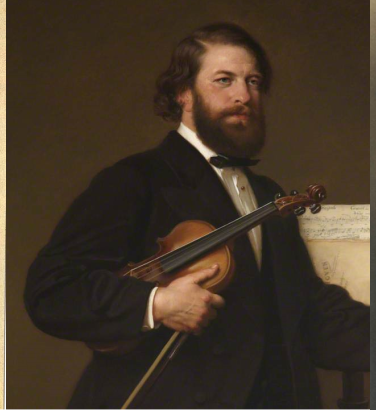
Haydn's lost joke
1 Apr 2025
News Story
A sensational discovery at St Cecilia’s Hall in Edinburgh has unearthed a long-lost joke by Joseph Haydn, right at the heart of one of his most popular works.
The composer’s Symphony No 45 in F sharp minor is better known as the 'Farewell' Symphony, thanks to the final movement being written in such a way that the players gradually leave the stage, until only a pair of violins is left. This was Haydn’s way of communicating to his employer, Prince Nikolaus Esterházy, that the court orchestra were tiring of his extended holiday and longed to return home to their families.
This was in 1772, and it appears that no-one read any more into this story until 1814. On 20 September that year, an Edinburgh resident named Anne (whose full name has yet to be firmly established) wrote in her diary, which has been found behind the lining of an oboe case at St Cecilia's Hall:
As night fell, I accompanied Mrs Nourse to a supper party at Mr Mather's residence. The company was made up chiefly of the latter’s musical friends, many new to my acquaintance. Their presence was accounted for after a sadly unremarkable meal, the subject of some disappointment to my friend. Mr Mather, an amiable gentleman indeed, proceeded to beg our indulgence for what he termed ‘a little trifle’, though it was clear to all that his enthusiasm was barely to be contained.
He went on to explain, at greater length than was truly necessary, how long he had admired the late Dr Haydn, a composer (said he) whose music revealed a man of great personal warmth and wit. One afternoon, on going about his business in some haste, Mr Mather had upset a table on which sat his copy of the Farewell Symphony. The music came to rest upon the floor, where it lay open at the last page. It was, however, a fortuitous accident, for as he bent down to retrieve it, an idle thought came to him. What if one were to take the end of the symphony as its beginning, turning it about so the orchestra came together instead of going their separate ways?
Our diarist goes on to describe a performance of this ‘Farewell Symphony in reverso’ directed by Mather (playing the viola part), which met with considerable approval. One member of this audience (sadly not named) went as far as to suggest the piece be christened the Welcome Symphony.
It is known that Mather's fortunes declined considerably in the late 1810s, which may account for his discovery not having been taken up by the wider musical establishment. It has also been suggested that Haydn actually hinted at this hidden joke in another symphony he wrote later that same year of 1772. The third movement of his Symphony No 47 consists of the standard minuet and trio: both are made up of two parts, the second (in each case) being an exact mirror image of the first – hence its modern nickname of 'Palindrome'. Could this be a sly indication by the composer about another palindrome that lay undiscovered?
Research is ongoing, but suffice it to say that if an SCO concert you are attending should start with only two violinists, joined by their fellow Orchestra members only once the performance is underway, you may just be witnessing a revival of the Welcome Symphony …
Related Stories
![Shot from behind a violinist playing to the audience at a dementia-friendly concert.]()
Tea Dance Concert programme
17 April 2025
Read the programme for our Re:Connect Tea Dance Concert.![A violinist shown at three different ages: as a young man in a drawing, middle-aged in a painting and elderly in an old photo]()
Joseph Joachim and the great German violin concertos
7 April 2025
Beethoven, Mendelssohn, Bruch and Brahms: four violin concertos, all connected by a single violinist.![]()
Haydn's lost joke
1 April 2025
Could there be more to the Farewell Symphony than meets the eye?


